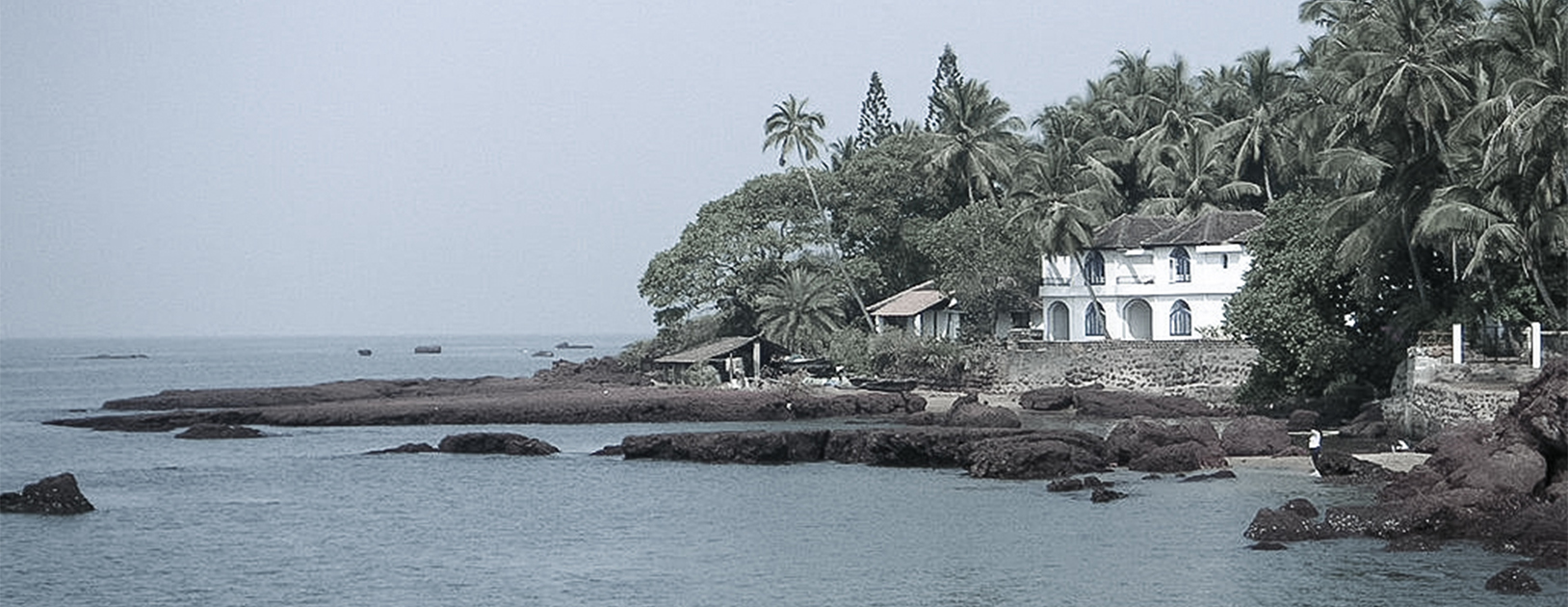The Supreme Court’s guiding principles for coastal regulation
Shibani Ghosh
June 16, 2017

PART 8 OF A SERIES ON ‘COASTAL REGULATION’ BY SHIBANI GHOSH FOR THE CPR-NAMATI ENVIRONMENT JUSTICE PROGRAM
ENVIRONMENTAL JUSTICE RIGHTS COASTAL GOVERNANCE
Shibani Ghosh is an environmental lawyer and Fellow at CPR.
The Supreme Court of India has often been commended for its vital role in protecting the environment. One of the areas of environmental concern where the Supreme Court’s involvement has been crucial is the protection and conservation of India’s coastal environment. In the context of the proposed amendments to the Coastal Regulation Zone (CRZ) Notification 2011, a law that permits varying degrees of land use in demarcated coastal areas, Ghosh looks at three judgments of the Supreme Court. These judgments not only express deep concern about the state of India’s coastal environment and the urgent need to protect it, but also establish the principles that the Court thinks should guide government’s action on the environment generally and the coasts specifically.
The three judgments
The first judgment was delivered in Indian Council for Enviro-legal Action v Union of India [(1996) 5 SCC 281]. It highlighted that Coastal Zone Management Plans (CZMPs) which were to be prepared by State Governments had not been finalised despite the passage of the statutory period of one year. It also challenged the amendments made to the law by the Central Government in 1994 to relax certain prohibitions.
The Court directed the Central and State Governments to finalise the CZMPs. On the issue of non-enforcement of environmental laws, the Court observed that ‘[e]nactment of a law, but tolerating its infringement, is worse than not enacting a law at all. … Continued tolerance of such violations of law not only renders legal provisions nugatory but such tolerance by the enforcement authorities encourages lawlessness and adoption of means which cannot, or ought not to, be tolerated in any civilized society’. The Court also found two of the 1994 amendments – that reduced the no-development zone (NDZ) – to be illegal. It asked the Central Government to consider constituting State and National Coastal Zone Management Authorities (CZMAs) for the effective implementation of the 1991 Notification.
In a landmark judgment in S. Jagannath v Union of India [(1997) 2 SCC 87], the Court referred to expert reports to identify the adverse impacts of coastal pollution caused by non-traditional and unregulated prawn farming. It held ‘[t]he purpose of the CRZ Notification is to protect the ecologically fragile coastal areas and to safeguard the aesthetic qualities and uses of the sea coast. The setting up of modern shrimp aquaculture farms right on the sea coast … is per se hazardous and is bound to degrade the marine ecology, coastal environment and the aesthetic uses of the sea coast’. The Court decided that prawn farming industries were prohibited in the coastal regulation zones under the CRZ Notification 1991 and their functioning was in violation of various other laws. It, however, excluded traditional systems of aquaculture from this prohibition.
In Vaamika Island v Union of India and Ors. [(2013) 8 SCC 760], the issue before the Court was whether certain properties on an island in the Vembanad Backwaters of Kerala should have been categorised as CRZ 1, which restricts its rebuilding or expansion, in Kerala’s CZMP. The Court held that the properties had been correctly categorised, and that the owner had violated the law by constructing on these properties. The Court upheld the High Court’s direction to demolish the illegal structures.
Guiding Principles
From a review of these judgments, it is possible to identify at least three principles that should guide environmental decision-making by the executive.
First, protection and conservation of our environment is the paramount objective of Indian environmental laws, and decision-making processes under these laws should support the furtherance of this objective.
In Indian Council for Enviro-legal Action, the Court assessed the government’s amendment to allow any construction within the NDZ, i.e. the area within 200 m from the High Tide Line (HTL). The Court invalidated this amendment holding that ‘[n]o suitable reason has been given which can persuade us to hold that the enactment of such a proviso was necessary, in the larger public interest, and the exercise of power under the said proviso will not result in large-scale ecological degradation and violation of Article 21 of the citizens living in those areas’. On the second amendment that relaxed the NDZ for tidal rivers from 100 m from HTL to 50 m, the Court did not see any reason to support a blanket reduction. It concluded that the reduction had been done for ‘extraneous reasons’. The Court held that ‘we are unable to conclude that the said amendment has been made in the larger public interest and is valid. This amendment is, therefore, contrary to the object of the Environment Act and has not been made for any valid reason and is, therefore, held to be illegal’.
In S. Jagannath, the Court held that ‘[k]eeping with the international commitments, and in greater national interest, the Government of India and the Governments of the coastal States are under a legal obligation to control marine pollution and protect the coastal environment’. The Court also highlighted that ‘[a]ny activity which has the effect of degrading the environment cannot be permitted. Apart from that the right of the fishermen and farmers living in the coastal areas to eke their living by way of fishing and farming cannot be denied to them’.
In Vaamika Island, the Court supported the Kerala High Court’s judgement on the CZMP categorisation as the ‘direction was issued by the High Court taking into consideration the larger public interest and to save Vembanad Lake which is an ecologically sensitive area, so proclaimed nationally and internationally. Vembanad Lake is presently undergoing severe environmental degradation due to increased human intervention and, as already indicated, recognising the socio-economic importance of this waterbody, it has recently been scheduled under “vulnerable wetlands to be protected” and declared as [critically vulnerable coastal area]’. It affirmed the High Court’s order of demolition of illegal structures based on a previous decision of the Supreme Court in Piedade Filomena Gonsalves v State of Goa [(2004) 3 SCC 445] wherein the Court had held construction raised in violation of CRZ cannot be lightly condoned.
Second, environmental decision-making must benefit from expert knowledge and inputs, and for any decision which is at variance with such knowledge, the decision-maker should provide clear reasons.
While assessing the validity of the 1994 amendments in Indian Council for Enviro-Legal Action, the Court considered the recommendations of the Vohra Committee, an expert committee constituted by the Government to consider tourism development in coastal areas, keeping in mind the requirements of sustainable development and protection of fragile coastal ecology. Striking down the two amendments allowing construction in the NDZ, the Court observed that ‘no satisfactory reason has been given by the Union of India as to why it departed from the opinion of the Expert Committee and that too in such a manner that the concession which has now been given is far in excess of what was demanded by the Hotel and Tourism Industry’.
In S. Jagannath, the Court opined that ‘before any shrimp industry or shrimp pond is permitted to be installed in the ecolog[icall]y fragile coastal area it must pass through a strict environmental test… There must be an environmental impact assessment before permission is granted to install commercial shrimp farms… The assessment must also include the social impact on different population strata in the area. The quality of the assessment must be analytically based on superior technology’. This led to the direction to the Central Government to constitute an authority to oversee the protection of coastal areas.
Third, the government cannot arrogate to itself unbridled discretionary powers to dilute environmental norms.
In the absence of proper guidance on how to exercise such powers, the cost to the environment, and the people dependent on it, could be very high. In Indian Council for Enviro-Legal Action, while invalidating part of the 1994 amendments, the Court found that the Government had given itself excessive discretionary powers to relax prohibitions in the NDZ. The Court observed that the amendment ‘which gives the Central Government arbitrary, uncanalized and unguided power, the exercise of which may result in serious ecological degradation and may make the NDZ ineffective is ultra vires’.
As we witness an escalation in environmental conflicts, a blatant disregard for statutory processes, and a deliberate move towards diluting environmental norms, it is instructive to look back at judicial precedents that invalidated previous government attempts to dilute coastal regulation.
Shibani Ghosh would like to thank Yogini Oak for her valuable research assistance that has informed this piece.
The other pieces in this series can be accessed below:



